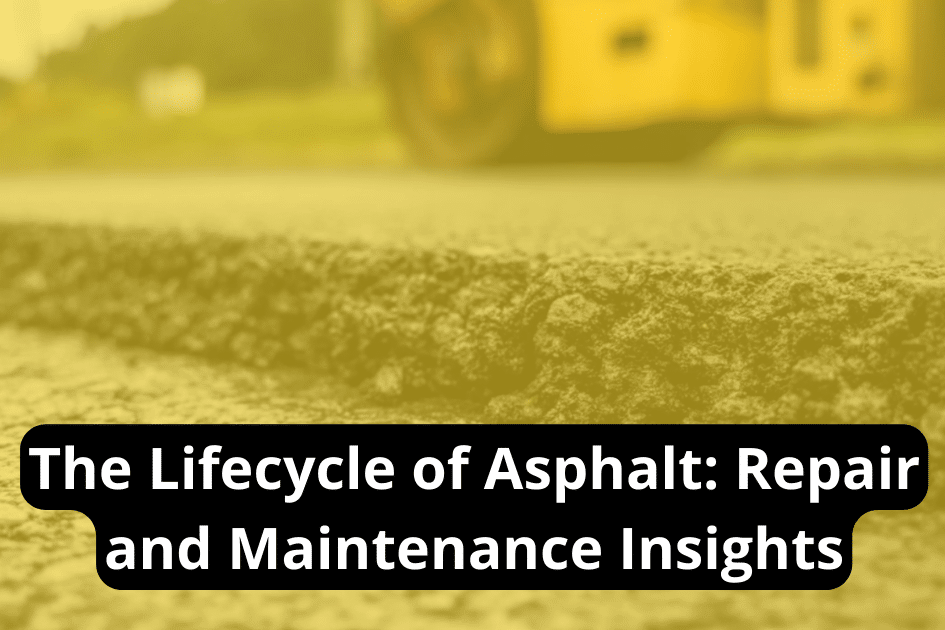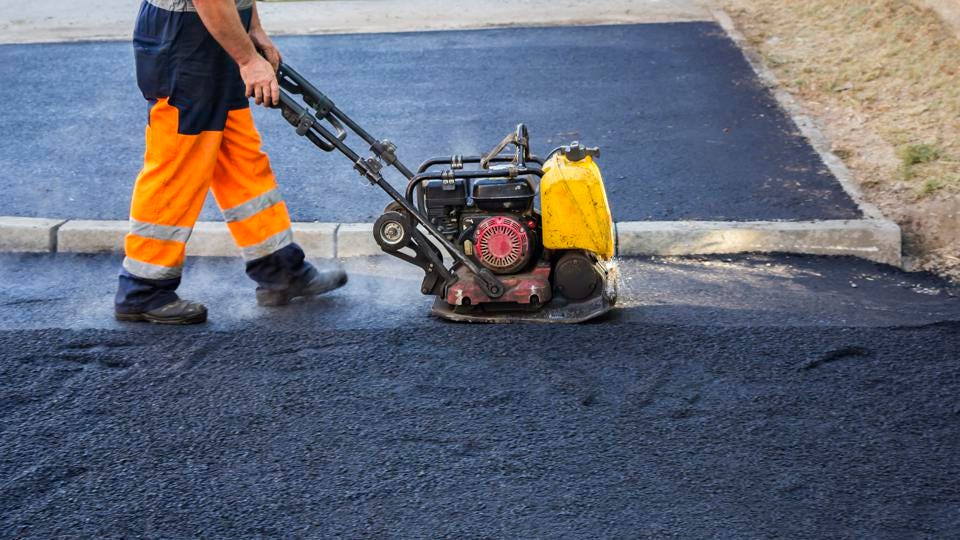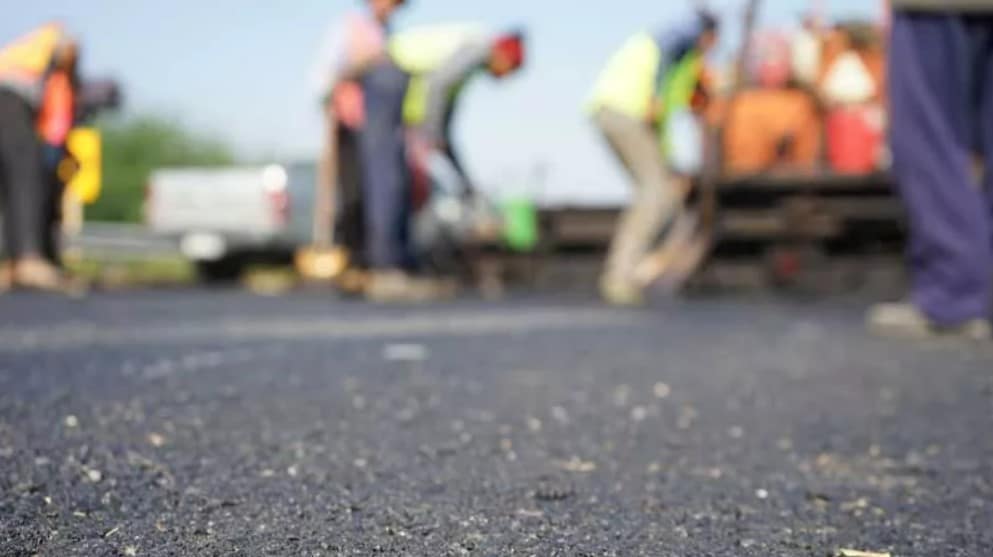
Envision yourself walking on a new, sleek asphalt road. It might seem incredible that such a robust surface can degrade over time. However, rest assured, we have all the information you need!
We’ll embark on a thorough exploration of asphalt’s lifecycle, examining its elements, ways to fix it, and vital maintenance techniques.
Let’s untangle this journey and gain knowledge on how to enhance the durability of your asphalt surfaces.
Understanding Asphalt: Composition and Use
We aim to clarify the complexity of asphalt, exploring its composition and various uses. As professionals in the asphalt domain, we understand that the material is far from straightforward. It is a complicated mix of aggregates – typically stone, sand, or gravel – amalgamated with bitumen, a sticky black substance obtained from crude oil. This mix results in a substance resistant to weather, making it perfect for road construction.
Our experience in Austin and San Antonio, TX, has shown us how asphalt’s performance can be influenced by temperature changes. It can expand or contract with temperature variations, potentially causing cracks if not managed correctly. This is where our specialized knowledge becomes invaluable; preserving the structural integrity of this crucial infrastructure component demands regular inspection and immediate repairs.
The prevalence of asphalt can be attributed to its flexibility, durability, and most significantly, its cost-effectiveness. It is less expensive than concrete yet reliable for many applications. It plays a crucial role in transportation infrastructure across Texas, from roads to parking lots to airport runways. Comprehending its composition enables us to offer optimal maintenance solutions, thus ensuring the longevity of these surfaces.
Lifecycle Stages of Asphalt
Get ready to comprehend the various stages that are part of a standard road surface’s lifecycle, from its creation to its ultimate decline. This cycle is significant in grasping asphalt’s robustness and the significance of routine upkeep.
The process begins with the installation and quality assurance of asphalt. It’s heated to high temperatures until it achieves a semi-liquid state. This concoction is then spread over the ready roadbed and compressed with the use of heavy equipment. At this point, quality assurance is critical; we verify that the mix’s temperature, density, and content are correct for maximum durability.
Subsequently, the asphalt enters the wear-and-tear stage. Even though it is robust, asphalt isn’t resistant to damage brought on by vehicular loads, severe weather conditions, or environmental aspects such as tree roots or ground shifts. These factors can result in structural breakdowns like potholes or fissures.
Over a period, these damages show indications of decline – another vital stage in the lifecycle of asphalt. These signs encompass rutting (depressions formed by ongoing traffic), fissures (due to temperature changes), and stripping (the detachment of aggregate particles from their binder).
Being familiar with these stages aids us in predicting potential issues and implementing suitable repair methods swiftly before minor problems turn into significant road hazards.
Asphalt Repair Methods
We are now going to explore the different strategies used for fixing damages on road surfaces, ranging from the simple patching of potholes to complete full-depth reconstruction.
Patching and filling potholes is the most widespread asphalt repair strategy. This is a cost-effective solution for minor damages that involves using cold or hot mix asphalt to fill up depressions and bring back the pavement’s smooth surface.
Following that, we have the resurfacing or overlay method. This is generally put into use when numerous layers of an asphalt pavement have worn down but the base layer is still in good condition. Here, we take off the top layer and place a fresh one over it, which significantly lengthens the lifespan of roads.
On the other hand, there’s a more thorough method named full-depth reconstruction. This labor-intensive procedure necessitates taking out all existing layers of asphalt pavement down to the subgrade level and completely rebuilding it. This strategy is employed when both the surface and base layers are severely damaged and beyond repair.
Each strategy comes with its own advantages that depend on aspects such as the level of damage, budget restrictions, anticipated traffic load, and longevity needs.
Ultimately, our goal is always to maintain the best possible road condition, keeping sustainability as a priority.
Maintenance Strategies for Asphalt
Understanding various strategies for preserving road conditions is essential, ranging from regular inspections and monitoring to methods that adapt to climate and traffic. Over time, asphalt’s condition worsens due to environmental influences, heavy traffic, and the natural aging of the asphalt binder. Hence, a thorough maintenance plan is necessary.
Regular inspection and monitoring form the bedrock of any successful maintenance approach. Through frequent checks, we can spot potential issues at an early stage before they transform into severe problems that require costly repairs. We can prolong the lifespan of asphalt roads and decrease long-term expenses through preventive maintenance techniques. These techniques include seal coating for protection against water infiltration and oxidation, crack filling to prevent water penetration and subsequent damage expansion, and prompt repair of minor damages.
Maintenance strategies that adapt to particular factors take into account:
– Climate: Weather conditions have diverse effects on asphalt degradation, leading to adjustments in our strategies.
– Traffic: The level of traffic load has a direct influence on the rate of wear and tear.
– Pavement age: Treatments may vary depending on whether the pavements are older or newer.
Implementing these methods simultaneously ensures the longevity of road quality while reducing the need for repairs.
Timing and Frequency of Asphalt Repairs
Deciding on the optimal time and regularity for managing pavement concerns is vital for maintaining their prime condition. Numerous factors affect this decision, such as the extent of identified damage, the burden of traffic, and climatic trends. It’s essential to keep a close eye on these elements to guarantee the best maintenance timetables.
The regularity of repairs is primarily dictated by the present condition of the asphalt and expected deterioration. For example, immediate action is required for issues like potholes or significant cracks, as they can swiftly worsen if ignored, creating safety hazards and increasing repair expenses. On the other hand, less severe surface defects may allow for a more lenient schedule.
Seasonal changes also have a significant impact on the timing of asphalt repair. It is generally advised to plan major repairs during the warmer periods when asphalt plants are in operation and the environment is suitable for paving tasks. Nevertheless, in colder periods, emergency patches can be applied using cold-mix asphalt products explicitly made for such situations.
Ultimately, strategic planning for scheduling is necessary, which strikes a balance between quick response to severe damages and effective use of resources. In doing this, we can preserve the functional integrity of our pavements and increase their lifespan while reducing the overall cost of maintenance.
Benefits of Proper Asphalt Maintenance

The proper maintenance of your pavement can yield significant benefits, including extended use and increased safety. Asphalt upkeep is not only about maintaining its visual appeal; it’s a crucial process that guarantees strength and performance over time. We have observed how organized maintenance programs can greatly prolong the lifespan of asphalt pavements.
Let’s closely examine the benefits:
- Safety Enhancement: Regular maintenance removes potholes and cracks, which can lead to accidents. This not only protects vehicles but also ensures the safety of pedestrians.
- Environmentally Friendly: Asphalt that is well-maintained decreases runoff, providing a positive impact on the environment.
- Durability: Prompt repairs prevent decay, ensuring your pavement can withstand the test of time.
- Cost-saving: While consistent maintenance comes with costs, these are substantially lower than the expenses associated with complete replacements or serious damage.
- Boosted Property Value: Pavements that are well-kept improve curb appeal, which could potentially raise property value.
These advantages are not just theoretical – they have been proven in numerous cases where diligent asphalt maintenance was carried out. It’s evident that proper upkeep is not just an option; it is a necessity for anyone seeking long-term pavement solutions.
Conclusion
We have examined the lifespan of asphalt, methods for its repair, and strategies for its upkeep.
We are comparing the initial asphalt installation expenses against the long-term advantages of consistent maintenance. This isn’t solely about monetary savings—it also involves extending life and improving the performance of the asphalt.
It is essential to grasp these elements to make knowledgeable choices about your asphalt surfaces.
